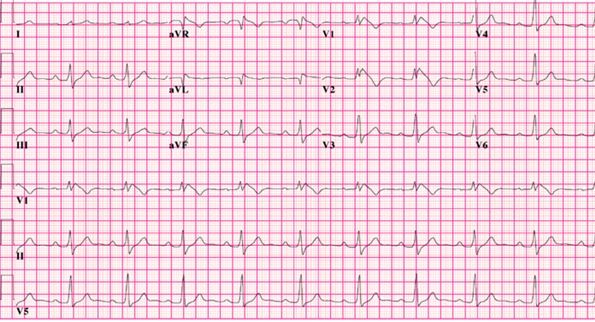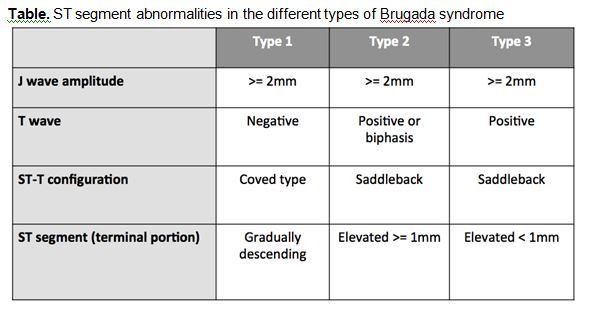- Clinical Technology
- Adult Immunization
- Hepatology
- Pediatric Immunization
- Screening
- Psychiatry
- Allergy
- Women's Health
- Cardiology
- Pediatrics
- Dermatology
- Endocrinology
- Pain Management
- Gastroenterology
- Infectious Disease
- Obesity Medicine
- Rheumatology
- Nephrology
- Neurology
- Pulmonology
Brugada Syndrome in a 15-Year-Old Boy
Figure.

Table

A 15-year-old boy presents for evaluation after a syncopal episode while playing football. He denies any current headache, chest pain, or shortness of breath. He admits to feeling heart palpitations before losing consciousness.
On further questioning, he admits to episodes of palpitations over the past 6 months, though no prior history of syncope. He has no other past medical or surgical history. He takes no prescription or over-the-counter medications. He has no known food or drug allergies and denies alcohol and recreational drug use. Pertinent family history: his father died at age 30 years of sudden cardiac death.
The patient’s vital signs were all within normal limits; heart rate, 64 beats/min. Physical examination was normal, no heart murmurs were heard.
ECG tracing shown in Figure above right.
1. What is your interpretation of this ECG?
2. What is the diagnosis?
3. What is the treatment?
Answers
1.ECG interpretation: Sinus rhythm with a first-degree AV block and a ventricular rate of 64 beats/min. Also noted are “coved-type” biphasic T waves in V1 and V2 and wide S waves in the lateral and inferior leads.
2. Diagnosis:Brugada syndrome is a hereditary disease characterized by ST-segment elevation in right precordial leads (V1 to V3) that is unrelated to ischemia, electrolyte disturbances, or obvious structural heart disease and is associated with a high risk of sudden cardiac death. Brugada syndrome is a sodium channel disorder that is associated with 1 of 3 ECG repolarization patterns, but Type I is the only ECG criterion that is diagnostic of Brugada syndrome.1 (See Table, above right.)
3. Treatment: There is no current pharmacologic therapy that has been proved to reduce the occurrence of arrhythmias or sudden death in Brugada syndrome. Currently, an automatic implantable cardiac defibrillator (ICD) is the only treatment proved effective in treating ventricular tachycardia and fibrillation and preventing sudden death in patients with Brugada syndrome.2
For more quizzes on a wide range of topics, visit QuizEM.org.
References:
1. Wilde AA, Antzelevitch C, Borggrefe M, et al. Proposed diagnostic criteria for the Brugada syndrome: consensus report. Circulation. 2002;106:2514-2519.
2. Dizon Jose M. Brugada syndrome treatment & management: practice essentials. Medscape Overview. http://emedicine.medscape.com/article/163751-overview. Accessed December 4, 2013.
Tracing courtesy of ecgpedia. http://en.ecgpedia.org/wiki/File:Brugada_syndrome_type1_example3.png. Accessed December 4, 2013.
Table courtesy of ecgpedia. http://en.ecgpedia.org/wiki/Brugada_Syndrome. Accessed December 4, 2013.
